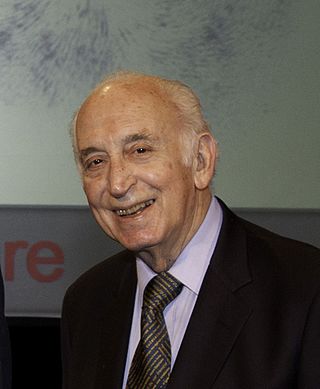
Heat transfer is a discipline of thermal engineering that concerns the generation, use, conversion, and exchange of thermal energy (heat) between physical systems. Heat transfer is classified into various mechanisms, such as thermal conduction, thermal convection, thermal radiation, and transfer of energy by phase changes. Engineers also consider the transfer of mass of differing chemical species, either cold or hot, to achieve heat transfer. While these mechanisms have distinct characteristics, they often occur simultaneously in the same system.

The American Society of Mechanical Engineers (ASME) is an American professional association that, in its own words, "promotes the art, science, and practice of multidisciplinary engineering and allied sciences around the globe" via "continuing education, training and professional development, codes and standards, research, conferences and publications, government relations, and other forms of outreach." ASME is thus an engineering society, a standards organization, a research and development organization, an advocacy organization, a provider of training and education, and a nonprofit organization. Founded as an engineering society focused on mechanical engineering in North America, ASME is today multidisciplinary and global.
Exergy, often referred to as "available energy" or "useful work potential", is a fundamental concept in the field of thermodynamics and engineering. It plays a crucial role in understanding and quantifying the quality of energy within a system and its potential to perform useful work. Exergy analysis has widespread applications in various fields, including energy engineering, environmental science, and industrial processes.

Adrian Bejan is a Romanian-American professor who has made contributions to modern thermodynamics and developed his constructal law. He is J. A. Jones Distinguished Professor of Mechanical Engineering at Duke University and author of the books Design in Nature, The Physics of Life, Freedom and Evolution and Time And Beauty. He is an Honorary Member of the American Society of Mechanical Engineers and was awarded the Benjamin Franklin Medal and the ASME Medal.

Robert Henry Thurston was an American engineer, and the first professor of mechanical engineering at Stevens Institute of Technology.
Applied mechanics is the branch of science concerned with the motion of any substance that can be experienced or perceived by humans without the help of instruments. In short, when mechanics concepts surpass being theoretical and are applied and executed, general mechanics becomes applied mechanics. It is this stark difference that makes applied mechanics an essential understanding for practical everyday life. It has numerous applications in a wide variety of fields and disciplines, including but not limited to structural engineering, astronomy, oceanography, meteorology, hydraulics, mechanical engineering, aerospace engineering, nanotechnology, structural design, earthquake engineering, fluid dynamics, planetary sciences, and other life sciences. Connecting research between numerous disciplines, applied mechanics plays an important role in both science and engineering.

The Engines of Our Ingenuity is a daily radio series produced jointly by KUHF-FM, Houston, Texas, and the University of Houston.

George Nicholas Hatsopoulos was a Greek American mechanical engineer noted for his work in thermodynamics and for having co-founded Thermo Electron.
The Max Jakob Memorial Award recognizes an 'eminent scholarly achievement and distinguished leadership' in the field of heat transfer. Awarded annually to a scholar by the American Society of Mechanical Engineers (ASME) and the American Institute of Chemical Engineers (AIChE), it is the highest honor in the field of heat transfer these professional organizations bestow.
Joseph Henry Keenan was an American thermodynamicist and mechanical engineer noted for his work in the calculation of steam tables, research in jet-rocket propulsion, and his work in furthering the development in the understanding of the laws of thermodynamics in the mid 20th century.

In thermodynamics, heat is energy in transfer between a thermodynamic system and its surroundings by modes other than thermodynamic work and transfer of matter. Such modes are microscopic, mainly thermal conduction, radiation, and friction, as distinct from the macroscopic modes, thermodynamic work and transfer of matter. For a closed system, the heat involved in a process is the difference in internal energy between the final and initial states of a system, and subtracting the work done in the process. For a closed system, this is the formulation of the first law of thermodynamics.
Cheng Xu is a Chinese American aerodynamic design engineer and engineering manager. He is a Fellow of the American Society of Mechanical Engineers and a member of the Technical Committee on Energy and Power Systems, IASTED. He also served as a guest editor of International Journal of Rotating Machinery.
Max Jakob was a German physicist known for his work in the field of thermal science.
Amir Faghri is an American professor and leader in the engineering profession as an educator, scientist, and administrator. He is currently Distinguished Professor Emeritus of Engineering and Distinguished Dean Emeritus at the University of Connecticut. He is also currently Distinguished Adjunct Professor at the University of California, Los Angeles. Faghri served as Head of the Mechanical Engineering Department from 1994 to 1998, and Dean of the School of Engineering at the University of Connecticut from 1998 to 2006. Faghri is well known for his contributions to the field of heat transfer. He is the world's leading expert in the area of heat pipes and a contributor to thermal-fluids engineering in multiphase heat transfer.

Sir John Harold Horlock FRS FREng was a British professor of mechanical engineering, and was vice-chancellor of both the Open University and the University of Salford, as well as vice-president of the Royal Society. In 1977, he was elected a fellow of the Royal Academy of Engineering
Richard Otto Buckius is an American engineer and professor of mechanical engineering at Purdue University. He served as the chief operating officer for the National Science Foundation (NSF) from 2014 to 2017.

Leroy Stevenson (Skipp) Fletcher is an American mechanical and aerospace engineer, and college dean, who served as the 104th president of the American Society of Mechanical Engineers in 1985–86, and was recipient of the 2002 ASME Medal.

John Henry Lienhard V is the Abdul Latif Jameel Professor of Water and Mechanical Engineering at the Massachusetts Institute of Technology. His research focuses on desalination, heat transfer, and thermodynamics. He has also written several engineering textbooks.

Ali Galip Ulsoy is an academic at the University of Michigan (UM), Ann Arbor, where he is the C.D. Mote Jr. Distinguished University Professor Emeritus of Mechanical Engineering and the William Clay Ford Professor Emeritus of Manufacturing.
Gregory Matthew Shaver is an American mechanical engineer and an academic. He is the director of Ray W. Herrick Laboratories and is a professor at Purdue University.











